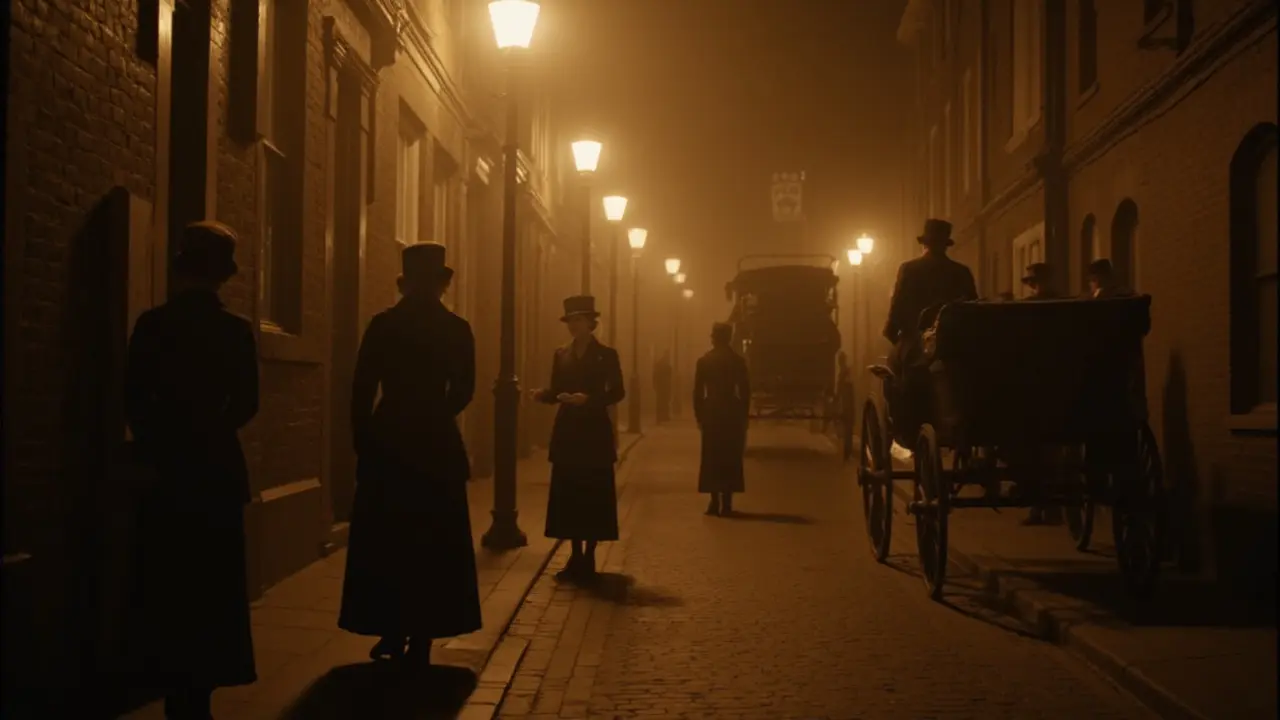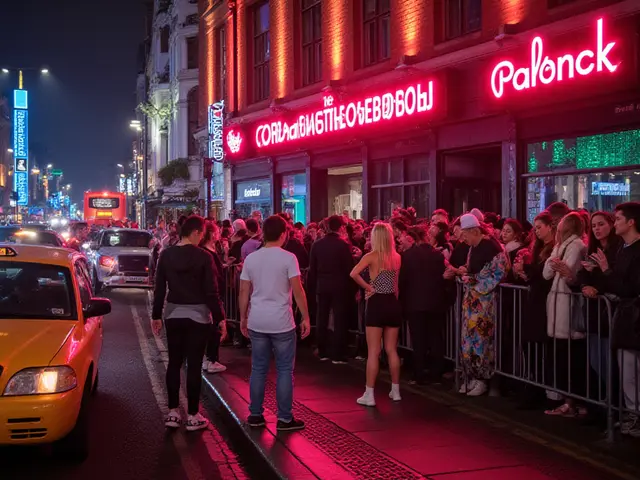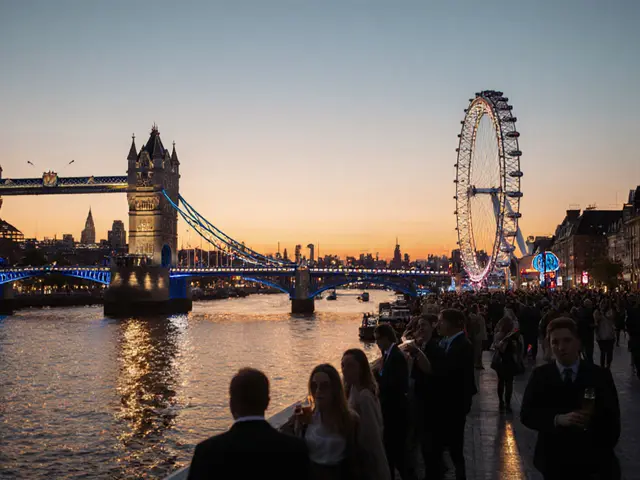Back in the roaring ‘20s, the word “call girl” wasn’t tossed around at dinner tables. Now, almost everyone knows what it means. The world’s oldest trade has survived laws, shifting morals, and the digital revolution. Phones, apps, encrypted chats—today’s call girl services barely resemble their shadowy beginnings. How did things change so fast, and where is it all heading? There’s more to the story than Hollywood whispers and tabloid scandals.
Early Roots: How Call Girl Services Began
Long before the digital age, call girl services existed in quieter, more secretive ways. Back in Victorian London, brothels hid behind closed doors and elaborate codes. Police raids were common, but businesses adapted, using private homes as meeting spots and relying on word-of-mouth between discreet gentlemen. The late 19th century saw the rise of “escort” agencies in Paris and New York, where women acted as dinner companions for the city’s elite. It wasn’t just about sex; it was also about appearances and connections in high society. Criminal laws were inconsistent. Some places cracked down harshly, while others ran networks under the nose of bribed officials.
During the 1940s American wartime, advertisements for “hostesses” and “dancers” appeared in newspapers, always wrapped in code words. You’d find phone numbers written in lipstick on restroom walls, a far cry from today’s slick websites. By the 1960s, Hollywood glamorized the call girl image, especially when stars like Shirley MacLaine owned the role on screen. The line between professional companionship and personal scandal blurred. Meanwhile, phone technology, like private phone lines, gave call girls more power to choose who they worked with, letting them organize appointments without middlemen.
It’s tempting to think laws ruled everything, but social attitudes mattered just as much. In conservative eras, women took more risks for less money. Secrets and coded language became survival tools, with networks forming among clients and workers alike. Ask any historian: cities like Paris, Berlin, and Chicago each had their own flavor of services—with Berlin’s scene bustling underground during the Weimar period, and Chicago’s famous “Everleigh Club” setting early standards of luxury. Yet everywhere, discretion was the most valuable asset.
Tips for those curious: Read up on cases like the 1917 shutdown of Storyville in New Orleans, which proves authorities can reshape entire markets overnight. You’ll also find stories about unexpected alliances between call girls and politicians. And don’t forget—early directories known as “blue books” listed agencies and their specialties, like a Yelp before Yelp, but with a velvet cover.
Cultural Shifts: From Taboo to High Society
All it took was the post-war boom and a dash of sexual liberation for call girl services to step into the public gaze. In the 1970s, places like Las Vegas changed the game by relaxing enforcement and moving some services above ground (though always in a gray area). Escorting took on new respectability, partly due to the “Girlfriend Experience” popularized in advertisements and by well-known courtesans. Suddenly, it wasn’t only businessmen and politicians hiring escorts—celebrities, rock stars, and Wall Street types got in on the act, seeking companionship without the strings of regular dating.
This wasn’t just about money. Some call girls became almost celebrities in their own right. Xaviera Hollander’s “The Happy Hooker” memoir shot up bestseller charts, and in Japan, the world’s first escort booking apps appeared on early mobile phones—years before the West caught up technologically. Meanwhile, in Europe, escort agencies used glossy magazines with shimmery images and detailed bios, turning what was once underground into a kind of open secret. High-end events sometimes had unofficial “companion” lists, and five-star hotels often looked the other way if the clientele was quiet and discreet.
Movies and magazines softened public attitudes, blurring scandal and glamour. Julia Roberts in “Pretty Woman” put a Hollywood stamp on the call girl fantasy. But the stigma never fully vanished—press stories about big scandals (like the 2007 Eliot Spitzer case) proved the old double standards died hard. Polls from the 1980s show that while half the public believed adult services were “immoral,” a third said legalization would cut crime and boost tax revenue. The debate went mainstream, sparking heated talk on TV and at kitchen tables alike.
In this era, prices soared for high-end companionship, with hourly rates rivaling luxury car payments. Select agencies started doing background checks on clients—something nearly unheard of in shady prior decades. Discretion stayed important, but some workers began carving out public brands, even hiring PR firms to handle image and media requests. This era gave the world the tragic “Heidi Fleiss” story, where fame and downfall came in equal measure. If you’re curious about history, look up Las Vegas and Tokyo’s deregulation moments or read interviews with industry pioneers like Veronica Monet.

The Digital Revolution: How Technology Changed Call Girl Services
The internet didn’t just change the way we date, shop, or share memes—it sent shockwaves through call girl services too. Suddenly, old-school agencies had to compete with independent workers, personal websites, and social networks. Photos, reviews, and direct chat with clients created a new level of transparency, which cut out sketchy middlemen but also raised the risk of exposure for everyone involved.
By the early 2000s, specialized forums and review boards like The Erotic Review and TERB became the go-to for clients and workers hunting for trustworthy matches. Fast forward just ten years, and mobile apps brought instant bookings, encrypted messaging, and payment options as easy as ordering your favorite takeout. High-profile sites, some now defunct (like Backpage), showed how quickly the legal and business landscape can shift when governments crack down. Cryptocurrency payments started popping up around 2014, making it even easier to keep transactions private.
Technology didn’t just empower clients—it changed the job for call girls too. Workers now needed digital marketing skills: think branding, SEO, and online safety training. Some used Twitter and Instagram for subtle hints, while others built exclusive content clubs on OnlyFans and similar platforms. Legal crackdowns like SESTA-FOSTA in the US pushed many off public websites, but clever workers shifted to encrypted apps, secure web hosting, and private Telegram groups. According to a 2019 University of Leicester study, independent online escorts have more control over working conditions and client selection than nearly any point in history.
Wondering how safety improved? Now, apps let workers screen clients, confirm identities, and share “bad date” warnings inside private forums. Tech-savvy escorts use encrypted backups and exit strategies for online profiles. This doesn’t mean risks disappeared—dozens of court cases show governments still target digital operators, and hackers sometimes steal private client lists. The balance between privacy and promotion is always shifting, especially as algorithms get smarter at flagging “adult” content. If you’re someone considering entering the digital side of the game, study internet security basics and keep business separate from your personal life, always using unique usernames and private devices.
Modern Realities: Safety, Trust, and New Challenges
Today, the call girl world is both slicker and riskier than ever. Agencies now compete with solo entrepreneurs running polished websites, shooting professional photos, and managing their own bookings. Safety is always top of mind—not just for the workers, but also for clients who worry about privacy leaks. Secure payment platforms and encrypted messaging are now standard, and many workers are part of online safety networks that let them warn each other about sketchy or dangerous people.
But new tech means new headaches. Facial recognition on social media can out someone in seconds, so most high-end escorts avoid showing faces in ad photos. There’s also the threat of online shaming or doxing (exposing someone’s real identity), which has been weaponized in nasty personal disputes. Even with these dangers, digital independence gives call girls more say—nearly two-thirds of digital independent escorts report they’ve set boundaries that wouldn’t be possible with traditional agencies, according to a 2023 survey by the Global Network of Sex Work Projects.
Trust is guarded like a treasure. Many workers rely on client reference systems, cross-checking backgrounds and meeting new people only in public places for first appointments. Fast, no-questions-asked bookings may seem attractive, but those who rush usually leave themselves open to risks. Beyond the legal worries, there are new debates: Should platforms allow advertising? Are laws about “facilitating” illegal services really protecting anyone, or just driving everything further underground? Privacy legal experts warn that new facial detection tech and anti-sex work algorithms can flag innocent activity as “suspicious,” making it easier for scammers to exploit clients and workers alike.
If you’re curious about how all this translates to the real world, ask escorts about encrypted payment systems like Monero or about what screening questions actually keep people safe. The truth—no two call girls work the same way. Some meet only trusted regulars; others travel internationally, adapting to legal zones and cultural rules. Modern call girls rank safety, self-branding, and tech knowledge as the most important skills, and some have even branched out into consulting, helping others stay safe and in control.

The Future of Call Girl Services: Tech, Laws, and Shifting Attitudes
Where does all this lead? Right now, the adult industry is on the razor’s edge of a wave. Artificial intelligence has begun to shape the online sex market, making it possible to build digital personas or vet clients in seconds with smart data. Blockchain-based platforms promise even more privacy, yet lawmakers keep inventing new ways to track online activity. That old stereotype of the “shady backroom deal” no longer fits; today’s call girls are more tech-savvy than ever, and many see themselves as entrepreneurs or even influencers.
But there’s a legal minefield. In the US, some states demand strict background checks for agencies, while in places like New Zealand, regulated sex work has increased safety and tax revenue, according to a New Zealand government report. Europe is a mixed bag—Germany’s model of partially legalized services includes health checks and registration, while Sweden criminalizes clients but not workers, sparking fiery debate about which approach really protects people or brings exploitation into the light.
Public attitudes are still rough around the edges. Polls in 2025 show growing support for full decriminalization, especially among younger adults who see tech-enabled services as just another gig economy job. Yet, the media still jumps on every scandal, and workers talk openly about battling stigma and misinformation even as they build loyal followings and business ventures. There’s an uneasy alliance between privacy champions, online security experts, and advocacy groups pushing for saner laws and better tech tools.
For anyone curious about the future, keep an eye on what’s happening with AI-driven apps, privacy hardware, and emerging cryptocurrency rules. It’s not just about money or sex anymore; it’s about autonomy, consent, and keeping up with tech that moves faster than almost any law on the books. The next big shift is already here—happening in every private chat, encrypted message, and carefully chosen photo that builds trust between a client and a companion. That’s the quiet revolution no one sees, but it’s changing the world—one click, call, or chat at a time.








10 Comments
Neil Tejwani
August 5, 2025 AT 15:45Oh, wonderful! Another post romanticizing the history of call girl services as if it's some untold story of cultural evolution! Seriously though, what's really missing here is a critical lens on how this industry perpetuates systemic inequalities and exploitation. But no, let’s just gloss over that because, hey, tech is ‘changing the game’ or whatever.
And can we talk about how this digital transformation essentially trades privacy for accessibility? It’s not progress—it’s surveillance capitalism wrapped in glitter. The post barely scratched the surface, glossing over the murky ethics and not even hinting at the darker realities.
So yeah, history is sort of interesting but let’s not pretend it’s just a quaint tale of evolution like some Victorian novel. It's loaded with uncomfortable truths—and if you want to actually understand this, you need to read beyond the shiny, sanitized narrative. That’s my two cents.
Keren Ruth
August 7, 2025 AT 23:35Honestly, I think it’s important to remember that behind those services, no matter how ‘modern’ or ‘digital’ they become, there are real people involved.
Many of whom might be vulnerable or forced into situations they never wanted to be a part of. 🙁
So while the post does a good job at showing some modern trends, I feel it misses highlighting the ongoing exploitation and the need for more awareness and support for those individuals. It’s not just about tech and history; it’s about ethics and human rights. Let’s not forget that! ❤️
Rhys Harley
August 10, 2025 AT 21:19I must admit, the post attempts an admirable overview of the evolution of call girl services; however, the brevity with which it treats complex socio-economic and cultural dynamics is somewhat lacking.
The impact of technology on the personal autonomy and privacy of those involved could be examined more scrupulously. Moreover, while the history is intriguing, the ethical debates and regulatory frameworks deserve a more formal treatment, lest we risk trivializing serious societal issues.
Nonetheless, it serves as an adequate primer, though quite superficial, so one must seek further scholarly discourse to gain a comprehensive understanding.
Stephanie Labay
August 14, 2025 AT 22:49This entire post is a total joke if you ask me. The glamorization of this crooked industry that preys on women is disgusting! 😡 We can’t just sit back and talk about ‘digital changes’ like it’s some neat tech innovation when it’s about destroying lives.
The history here doesn’t matter if people keep getting abused, trafficked, and exploited in the name of profit. Period. If you want to learn about some modern trend, how about focusing on combatting the scourge instead of sugarcoating it? This topic deserves outrage and action, not some bland historical recap.
Mohammed Muzammil
August 17, 2025 AT 06:39I really appreciate the effort to outline how call girl services have changed over time. It’s encouraging to see acknowledgement of technology’s role in transforming the landscape, especially in increasing safety and autonomy for some involved.
However, I believe there’s much more to explore in terms of how digital platforms can be utilized to empower rather than exploit. The emergence of direct communication channels and community support networks can potentially change the game positively.
It’s a complex topic, but we must hold onto optimism that progress is possible with informed strategies and continuous dialogue aimed at protecting vulnerable individuals.
Bonnie Cole
August 20, 2025 AT 04:22This post raises interesting points but I think it should address the human dignity aspect more directly. When discussing any service related to intimate human connection, one must consider the boundaries and respect owed to everyone involved.
Understanding historical and digital shifts is useful, but not at the expense of erasing the complexities of consent and personal agency. We should approach such topics with sensitivity and uphold cultural awareness, especially given the diverse backgrounds people come from.
Still, it’s a start to open conversation, and I hope further discussions will incorporate more of these respectful perspectives.
sam ly
August 23, 2025 AT 02:05Honestly the post is just parroting the usual nonsense about tech changes making everything better when in reality it's just another scam to get more data and control. These so-called 'modern trends' are probably just fronting for deeper exploitation networks.
We should be way more skeptical and critical of how surveillance and capitalism intersect with these industries instead of blindly buying into narratives about progress.
Honestly, if you think otherwise you’re just missing the bigger picture. This isn’t progress, it’s another tool for manipulation. Let’s wake up.
Jeanine Lee
August 25, 2025 AT 23:49While I appreciate the historical context, I feel the piece could benefit from clearer grammar and structure to improve readability.
Also, adding some more nuanced insight into how legal shifts have influenced the industry might provide a fuller picture without overwhelming the reader.
Overall, it's a good introduction but with a bit more polish and detail, it could be way more engaging and informative.
Hayley Wallington
September 1, 2025 AT 19:59The blending of history and digital evolution here strikes a balance that's quite captivating. It’s rare to see a topic like this handled with both respect and factual clarity. The post managed to highlight how cultural perceptions have shifted alongside technological advancement, which is really the heart of the matter.
However, I do think it’s important to continue this conversation with an open mind, embracing various cultural perspectives and experiences to deepen our understanding of the industry's complex reality.
Stephen Taliercio
September 4, 2025 AT 15:11I've been wondering about the extent to which the digital age has opened doors for things not always above board in this industry. What’s not clear from the post is whether digital tools have created a safer environment overall or a riskier, more shadowy one.
Given how much online data can be tracked, I suspect there's a darker, less visible side to this 'digital change'—something we need to keep an eye on. It would be good for future discussions to address the possibilities of both security enhancements and privacy invasions.
In any case, really thought-provoking stuff!